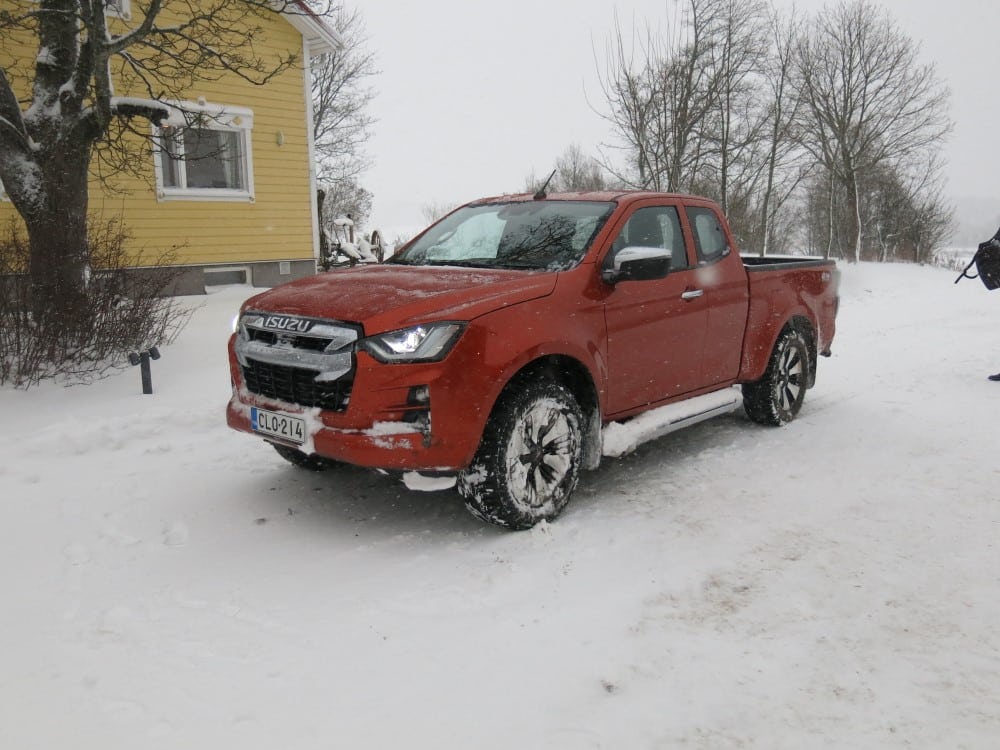The all-new Isuzu D-Max has now arrived in Finland and we were able to take a brief taste of the car during the winter’s heaviest snowstorm.
The Isuzu D-Max already has a long history. The first D-Max was produced in 1963 and this is the tenth generation.
There are four different trim levels and two different cabins.
The trim levels are L, LX, LS and LSE. The cab can be either Space Cab or Double Cab. The Double Cab is available in either a two-seater or a five-seater version.
The new D-Max is lower than the previous version but slightly wider. The wheelbase has increased by three centimetres.
The bonnet is slightly higher, which Isuzu says improves pedestrian safety. The edge of the platform is no less than three centimetres higher than before.
The Space Cab has a platform length at floor level of 183.5 centimetres and the Double Cab 157.1 centimetres
The ground clearance of the car is 24 centimetres. The front overhang is 89 centimetres and the rear overhang is 125 centimetres.
The rear bumper of the car now has two steps, making it easier to get on the platform than before.

More passenger car-like
Softer materials have been introduced to the cabin. In addition, stitching has been used to give the cabin more visual impact.
The driver’s and front passenger’s seats have more adjustment options than before. A good driving position was achieved without any problems.
In the LS and LSE models, the driver’s seat can be adjusted in eight different directions. The inclination can now also be adjusted.
Some models have electrically adjustable lumbar support.
Height adjustment has also been increased. Previously, the height adjustment was four centimetres, but now it is 5.5 centimetres. In the L models, however, this adjustment is only three centimetres.
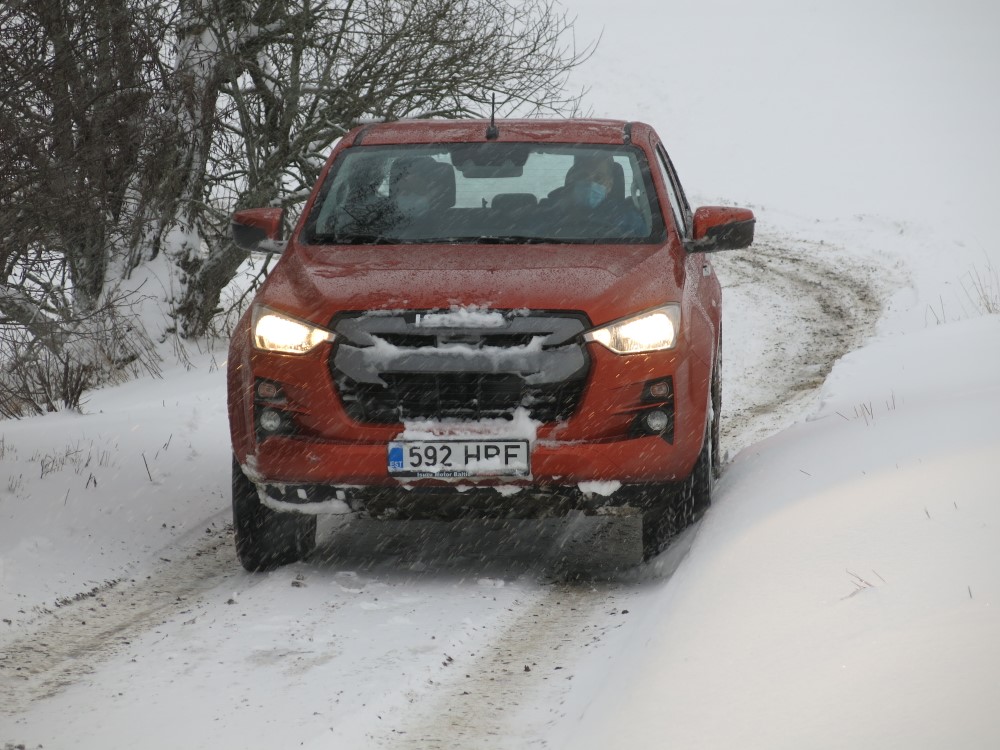
The centre console is eight centimetres higher and three centimetres wider in the new model.
In the centre of the instrument cluster, the display is larger and more versatile than before, showing radio channels, reverse radar, phone data, fuel consumption and traction, among other things. However, the instrument cluster is dominated by a large tachometer and speedometer.
New audio systems are also now available. Up to eight speakers are available.
The L and LX models have cd/rds/dab radio and bluetooth.
LS and LSE models have a 7- or 9-inch screen and Apple Carplay and Android Auto support. A rear view camera is also included. The LSE also has a cd/dvd player.
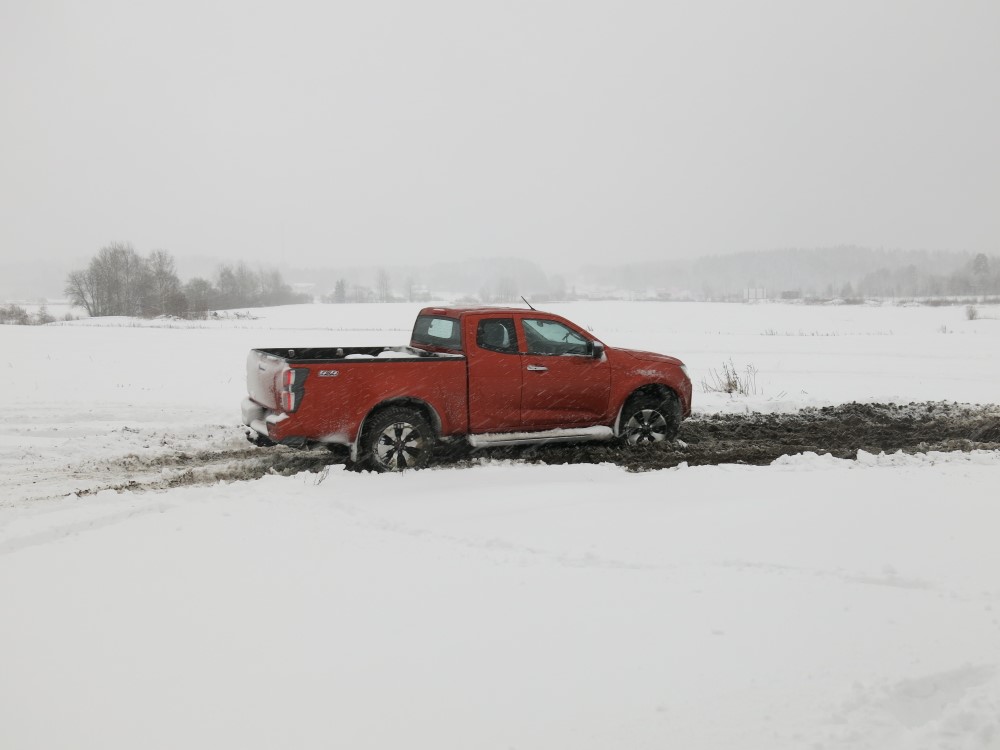
Updated chassis and engine
The chassis has undergone a lot of changes. The suspension has been updated and the car has bigger brakes. The chassis is stronger, partly due to the addition of one cross member to the chassis.
The car has been fitted with electric power steering and an aluminium cardan shaft.
Passenger safety has been improved, including a stronger body. There are also new driver assistance systems. These include collision warning, anti-collision assistance, traffic sign recognition, lane departure warning, lane-keeping assist, blind spot warning and cross-traffic warning.
The car’s 1.9-litre engine has been upgraded. The engine meets Euro 6d exhaust emission standards. The engine produces 163 horsepower.
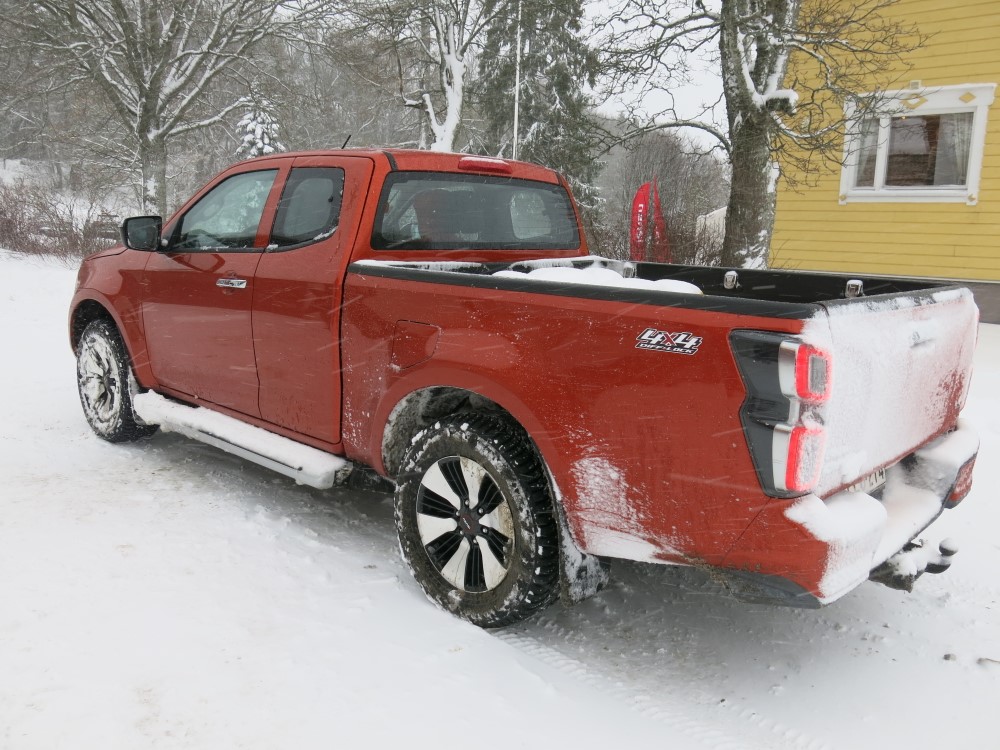
The engine has been equipped with a water-cooled intercooler and an electronically controlled supercharger, among other things. In addition, the injection pressure has been increased from 2000 bar to 2500 bar.
The exhaust gases are cleaned by a Nox trap, a particulate filter and an Adblue system.
The automatic gearbox has been upgraded and the range of the gear selector has been reduced. According to Isuzu, shifting is up to 40% faster than before.
The manual gearbox has also been updated. The reverse gear can now be unlocked by lifting the gear lever.
The four-wheel drive clutch is now on the dashboard and the switches for the rear differential and downforce limiter are on the centre console.

The off-road capabilities of the car have been improved. The rear differential now has a mechanical lock. It is available on the slow side. The lock engages when the speed is below 8 km/h and releases when the speed is above 30 km/h.
The car has a wading depth of 80 centimetres and an approach angle of 30.5 degrees. The angle of approach is 22.9 degrees and the angle of departure 24.2 percent. Tilt angle is 49 degrees.
The vehicle has a towing capacity of 3 500 kg and a load capacity of 1 000 kg.
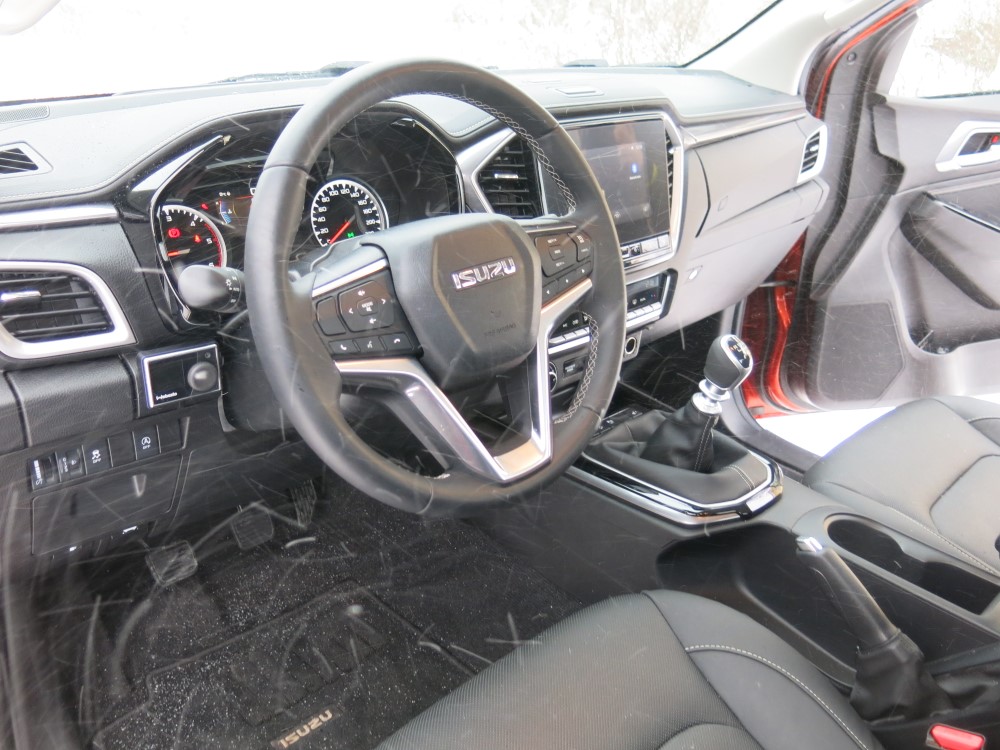
Short taster
We got to test the car very briefly in the field and on the road. On the road, the car was stable and very car-like. Even the noise of the car was not disturbing in the cabin.
Off-road, we got to drive in the field in snow and slush. The car was driven in manual gear and the four-wheel drive made for confident progress. There was no joy from the low-range brakes as the tyres failed to grip the slick, polished snow.
However, the car left a pleasant impression and for a tool, it is very much a passenger car in terms of interior space.
The cheapest price for the D-Max is €34 390.
The lowest price for the two-seater version of the Double Cab is €39 390, and €51 990 for the rear-seat version.
The car is guaranteed for five years or 100 000 km. The service interval is two years or 20 000 km.
